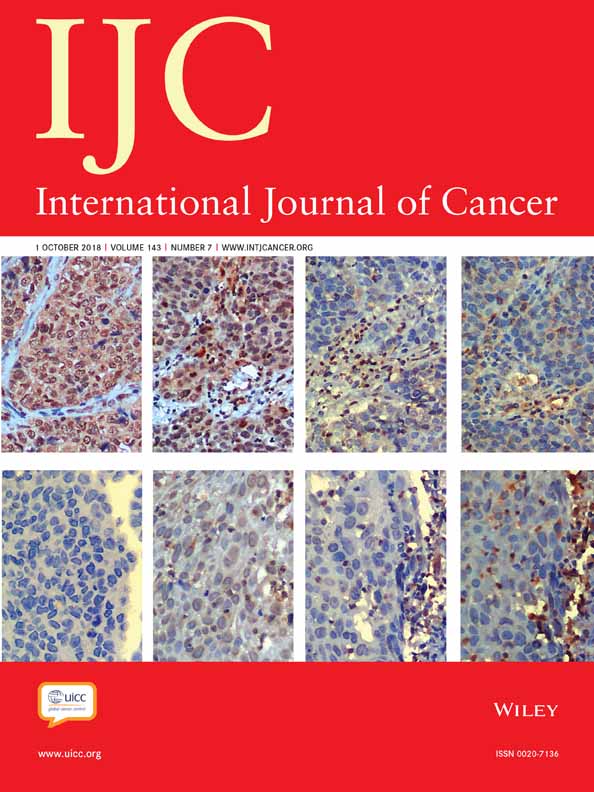Risk of virus and non-virus related malignancies following immunosuppression in a cohort of liver transplant recipients. Italy, 1985–2014
Others of the Italian Transplant & Cancer Cohort Study: Giacomo Zanus, Stefano Zanini, Paolo Rigotti (Padua University Hospital, Padua, Italy); Francesco Paolo Schena, Giuseppe Grandaliano, Marco Fiorentino, (University Hospital, Bari, Italy); Paolo Di Gioia, Sara Pellegrini, Chiara Zanfi, Maria Piera Scolari, Sergio Stefoni, Paola Todeschini, Laura Panicali, Chiara Valentini (“S. Orsola-Malpighi” Hospital, Bologna, Italy); Gian Luigi Adani, Dario Lorenzin (Udine University, Udine, Italy); Marco Colasanti, Manuela Coco, Fabrizio Ettorre, Roberto Santoro, Lucia Miglioresi (S. Camillo Hospital, Rome, Italy); Gianluca Mennini (Umberto I Policlinic, Rome, Italy); Annachiara Casella, Laura Fazzolari, Carlo Gazia, Chiara Belardi (Tor Vergata University, Rome, Italy); Gianpiero D'Offizi, Ubaldo Visco Comandini, Raffaella Lionetti, Marzia Montalbano, Chiara Taibi (INMI “L. Spallanzani”, Rome, Italy); Gian Benedetto Piredda, Maria Benigna Michittu, Maria Gavina Murgia, Bruno Onano (“Brotzu” Hospital, Cagliari, Italy); Lucia Fratino, Luigino Dal Maso, Paolo De Paoli, Diana Verdirosi, Emanuela Vaccher (CRO Aviano National Cancer Institute, Aviano, Italy); Francesco Pisani, Antonio Famulari, Federica Delreno, Samuele Iesari, Linda De Luca (University of L'Aquila, L'Aquila, Italy); Maurizio Iaria, Enzo Capocasale, Elena Cremaschi (Parma University Hospital, Parma, Italy); Silvio Sandrini, Francesca Valerio, Valentina Mazzucotelli, Nicola Bossini, Gisella Setti (Spedali Civili of Brescia, Brescia, Italy); Massimiliano Veroux, Pierfrancesco Veroux, Giuseppe Giuffrida, Alessia Giaquinta, Domenico Zerbo (Policlinico of Catania, Catania, Italy); Ghil Busnach, Laura Di Leo, Maria Luisa Perrino, Marialuisa Querques, Valeriana Colombo, Maria Chiara Sghirlanzoni (“Niguarda Ca’ Granda” Hospital, Milan, Italy); Piergiorgio Messa, Antonio Leoni (“Maggiore-Mangiagalli” Hospital, Milan, Italy); Vito Sparacino, Barbara Buscemi (Policlinico of Palermo, Palermo, Italy); Franco Citterio, Gionata Spagnoletti, Maria Paola Salerno, Evaldo Favi (Policlinico “A. Gemelli”, Rome, Italy); Giuseppe Paolo Segoloni, Luigi Biancone, Antonio Lavacca (“Molinette” Hospital, Turin, Italy); Maria Cristina Maresca, Carmelo Cascone, Bice Virgilio (Treviso Hospital, Treviso, Italy); Donato Donati, Fiorella Dossi, Andrea Fontanella, Andrea Ambrosini, Marco Di Cicco (“Ospedale di Circolo”, Varese, Italy).
Conflict of interest: The authors declare that they have no potential conflicts of interest.
Abstract
This cohort study assessed, in Italy, the overall pattern of risk of de novo malignancies following liver transplantation (LT). The study group included 2,832 individuals who underwent LT between 1985 and 2014 in nine centers all over Italy. Person–years (PYs) at cancer risk were computed from 30 days after LT to the date of cancer diagnosis, to the date of death or to the end of follow-up. Excess cancer risk, as compared to the general population, was estimated using standardized incidence ratios (SIRs) and 95% confidence intervals (CIs). During 18,642 PYs, 246 LT recipients developed 266 de novo malignancies, corresponding to a 1.8-fold higher cancer risk (95% CI: 1.6–2.0). SIRs were particularly elevated for virus-related malignancies, including Kaposi's sarcoma (SIR = 53.6, 95% CI: 30.0–88.5), non-Hodgkin lymphomas (SIR = 7.1, 95% CI: 4.8–10.1) and cervix uteri (SIR = 5.4, 95% CI: 1.1–15.8). Among virus-unrelated malignancies, elevated risks emerged for head and neck (SIR = 4.4, 95% CI: 3.1–6.2), esophagus (SIR = 6.7, 95% CI: 2.9–13.3) and adrenal gland (SIR = 22.9, 95% CI: 2.8–82.7). Borderline statistically significant elevated risks were found for lung cancer (SIR = 1.4, 95% CI: 1.0–2.1) and skin melanoma (SIR = 2.6, 95% CI: 1.0–5.3). A reduced risk emerged for prostate cancer (SIR = 0.1, 95% CI: 0.0–0.5). These findings underline the need of preventive interventions and early detection of malignancies, specifically tailored to LT recipients.
Abstract
What's new?
Liver transplantation often requires long-term immunosuppressive therapy, which increases the risk of certain infections and malignancies. The extent to which chronic immunosuppressant use impacts cancer risk following liver transplantation, however, remains unclear. In this multicenter cohort study in Italy, liver transplant recipients had an overall 1.8-fold higher cancer risk compared with the general population. Risk was elevated for virus-related malignancies, as well as for several cancers not associated with viral infections, including cancers of the head and neck, esophagus, and adrenal gland. The findings support further investigation into the prevention and early detection of cancer in liver transplant recipients.




